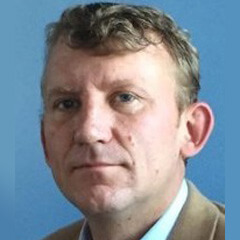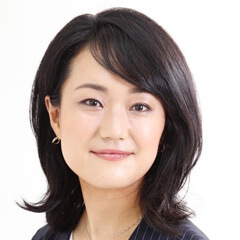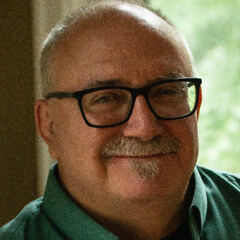Taking the Fear Out of Contamination: Surfaces, Water, and Air, Oh My!

“Surfaces, Water, and Air, Oh My! Tackling Different Contamination Risks,” a session of the 2021 PDA Pharmaceutical Microbiology Conference held Tuesday, Oct 5, focused on three distinct areas of contamination risk. Through presentations and a Q&A session, three experts shared their extensive knowledge to help the PDA audience tackle contamination in their own facilities.
Dan Klein, Senior Technical Service Manager, STERIS Corporation, has spent much time throughout his career evaluating, developing and testing disinfectants. EPA-registered disinfectants, highly effective tools for preventing contamination in controlled environments, can be rendered ineffective if used improperly. The variables that are not so obvious—temperature of the solution, hardness of the water, surface type—can have a dramatic impact on performance in keeping a clean room or laboratory under control, he said. Klein described how each variable affected the cleaning process; for instance, how organic material can inactivate some active ingredients, so the type and amount of the load matters as much as the active ingredient does. Neutralization recovery may not affect disinfection, Klein said, but it may affect how the results are interpreted. All these factors should be considered, especially when troubleshooting.
Klein recommended using a sporicide, not only alcohols, as a routine part of the cleaning rotation. Alcohols are good against Gram-positive/-negative bacteria, fungicidal activity and low viruses, but they will not take care of highly resistant bacillus species and different spore-formers. The application method can also impact disinfectant performance, Klein said, especially if you take into account any kind of mechanical action, “because it’s going to add that physical removal along with the chemical activity.” For example, a wipe might just push around spores rather than pick them up, whereas “with a spray, you have to be careful about inconsistent spray patterns and not getting full coverage or full contact.” So not only should the type of disinfectant be considered, but also “how you’re applying it and what that’s doing to the overall effectiveness.”
Yoko Nakai, Manager, HORIBA Advanced Techno, Co., Ltd., works with a research group of the PDA Japan Chapter that has studied and promoted the development of rapid microbiological methods (RMM). She presented a case study of pharmaceutical water based on an excursion in 2011 that resulted in deterioration of water quality and the months it took to recover due to infrequent testing and how long it took to receive results. Faster test methods would be required for the manufacturer to return to production safely and quickly. Nakai walked through the research undertaken to determine which RMM were most effective, at what sampling points and in what amount of time. Consequently, real-time, continuous monitoring using an automated system in the main flow and at the point of use was introduced, reducing recovery time from months to hours and allowing trending of contamination at an early stage. Nakai and the research group determined that combined monitoring and integrated data analysis of bio-fluorescent particle counting (BFCP) and ATP methods may enable more advanced microbiological quality control of pharmaceutical water.
There were a lot of challenges when the study first started, Nakai said, because it was very new, and the research group had to decide on the criteria and procedures for BFCP and ATP testing. Now, operations are connected to an internal network of air systems and to the building management system, which proved beneficial during the pandemic because monitoring could be done remotely. RMM is getting more popular in Japan, according to Nakai, especially in cell and gene therapy products. “The demand is high since the time of the administration is short, and the same or higher level of aseptic processing of sterilized product is required.”
Morgan Polen, Cleanroom, Air Flow and Particle Contamination Expert, Microrite, Inc., discussed how deficiencies in facility, cleanroom and barrier system designs or errors in their integration have caused contamination events that resulted in regulatory observations. Much of that is due to the use of outdated control approaches or technology that are not up to current GMP, he said.
“Qualified” facilities have problems when cleanrooms, barrier systems, or the integration of both into a manufacturing line, are not considered holistically. Polen stressed the vital role the direction and flow of air plays in a contamination control strategy.
“Differential pressure between rooms is only valid until the door is opened,” he said. At that point, whether through the door-opening process or people and carts moving between rooms, there is an exchange of air that facilitates contamination. Using comprehensive 3-D modeling of the airflow system in the design phase can provide a visual representation of conditions in a room and can illustrate how those changes can affect air flow.
“Unidirectional airflow, First Air, moving in a robust, controlled manner is the last resort of patient protection,” Polen said. “We’re required to care for three types of contaminants in pharmaceutical manufacturing—microbial contamination, particulate contamination, and endotoxin contamination.”
He believes it comes down to how much external contamination we want to have our products exposed to, for instance, plastic bags, all the packaging materials, or glass particles.
Even with isolators, “if we only focus on preventing contamination from coming into the isolator, that’s one thing, … but a manufacturing operation generates particles from conveyors, the filling process, moving vials and glass vials banging together on turntables.” In Polen’s opinion, that is why unidirectional airflow is the last defense: it provides first air over our products to prevent contamination that can occur simply as a matter of the manufacturing process.
Conclusion
As noted by our speakers, the threat of contamination can come from myriad sources, all of which can pose a risk to producing safe and effective sterile medicines. Whether the challenge is the air exchange from opening doors, microbial particles introduced in the water, or the chemistry of ingredients applied to disinfect surfaces—Oh my!—a facility should carefully consider every factor to ensure an adequately controlled environment.



 Dan Klein, Senior Technical Service Manager at STERIS Corporation, has extensive experience in the antimicrobials industry, including 20 years as a R&D Manager of Microbiology and Clinical affairs and as manager of a contract testing laboratory. Multiple areas of pharmaceutical, healthcare and Department of Defense projects have called on Klein’s technical expertise for support. He specializes in microbiology, regulatory affairs, disinfectant applications, and experimental testing and design.
Dan Klein, Senior Technical Service Manager at STERIS Corporation, has extensive experience in the antimicrobials industry, including 20 years as a R&D Manager of Microbiology and Clinical affairs and as manager of a contract testing laboratory. Multiple areas of pharmaceutical, healthcare and Department of Defense projects have called on Klein’s technical expertise for support. He specializes in microbiology, regulatory affairs, disinfectant applications, and experimental testing and design.  Yoko Nakai, Manager, HORIBA Advanced Techno, Co., Ltd., has been a project manager for the system development and application of Rapid Microbiological Method (RMM) since 2017. As a member of the PDA Japan Chapter’s GMP Committee for Aseptic Products, she participates in the RMM Research Group, which consists of RMM users (pharma companies) and RMM system suppliers. Through collaboration, the Group provides case studies on applications and implementation from scientific, engineering, and regulatory points of view to improve the quality and safety of pharmaceutical products by broadening the use of RMM in Japan.
Yoko Nakai, Manager, HORIBA Advanced Techno, Co., Ltd., has been a project manager for the system development and application of Rapid Microbiological Method (RMM) since 2017. As a member of the PDA Japan Chapter’s GMP Committee for Aseptic Products, she participates in the RMM Research Group, which consists of RMM users (pharma companies) and RMM system suppliers. Through collaboration, the Group provides case studies on applications and implementation from scientific, engineering, and regulatory points of view to improve the quality and safety of pharmaceutical products by broadening the use of RMM in Japan. Morgan Polen, with more than 35 years of experience working in cleanrooms and controlled environments in a variety of industries, is a subject matter expert in the field of contamination control and airflow visualization in cleanrooms. He has been instrumental in drafting and editing international cleanroom standards, contamination control guidelines and best practices working with ISO and ASTM technical groups. As a key member of Microrite’s Expert Contamination Control team, Morgan helps develop proactive contamination control strategies through pragmatic risk assessment, particle testing and airflow visualization and helps companies identify and remediate contamination-related problems.
Morgan Polen, with more than 35 years of experience working in cleanrooms and controlled environments in a variety of industries, is a subject matter expert in the field of contamination control and airflow visualization in cleanrooms. He has been instrumental in drafting and editing international cleanroom standards, contamination control guidelines and best practices working with ISO and ASTM technical groups. As a key member of Microrite’s Expert Contamination Control team, Morgan helps develop proactive contamination control strategies through pragmatic risk assessment, particle testing and airflow visualization and helps companies identify and remediate contamination-related problems.